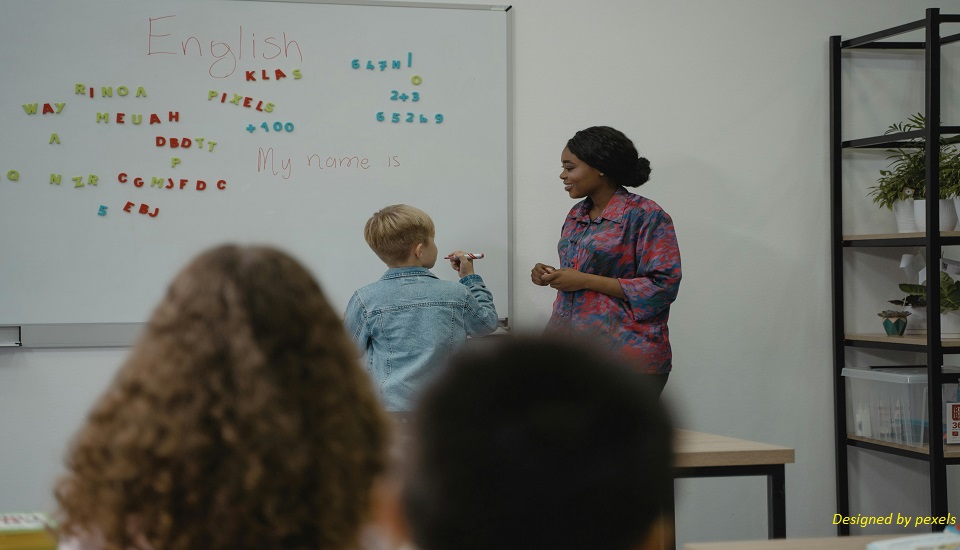Teaching Pronunciation: An Applied Manual for Teachers of Languages
30th May 2025

With pronunciation, you are either teaching a new language or enhancing the existing language classes you are teaching. When learners are able to pronounce the language clearly, they are more effective and clear communicators.
This blog will offer practical suggestions and classroom strategies for teaching pronunciation, including a quick summary of how online teacher training courses with certificates can be a very important resource for teachers who want to deepen their understanding of much-needed pronunciation instructional knowledge.
Why Is Pronunciation So Crucial?
Although it's something that many people overlook in language classes, good communication depends critically on pronunciation. Teaching pronunciation successfully starts with realizing how important it is.
Here is why pronunciation is so essential:
- It helps the students to be understood by others and prevents ambiguity and misunderstandings in communication.
- As long as students are confident in their word pronunciation, they will be able to engage fully in any discussion.
- Correct pronunciation helps students speak fluently, so enhancing the natural sound of their speech and reducing its ‘robotic quality.’
- Emphasizing pronunciation helps students—especially those who listen to native speakers—more precisely grasp spoken language.
Teaching the Best Methods for Pronunciation?
Pronunciation is not simply repeating sounds and words. Various activities, clear explanations, and approaches must be implemented.
Some of the best ways include:
- Minimal Pairs
Teaching students to distinguish between two often mixed sounds; for instance, ‘ship’ and ‘sheep,’ or ‘pat’ and ‘bat.’ It conducts their attention to slight sound differences.
- Sound Drills
Pronunciation requires repetition, and these drills assist students in repeating specific sounds until they get them right.
- Mimicry
Any recordings, audio snippets, or videos of native speakers could be used to encourage students to imitate them.
- Visual Aids
At times, students need to actually ‘see’ the sound being produced. Utilization of diagrams, mouth positions, or gestures should really help.
Aural Skills in the Classroom
Having discussed the effective techniques, let's now look at some practical activities to teach, they are not only effective but fun and engaging in the classroom:
- Tongue Twisters
These are a great and entertaining approach to learn challenging sounds. Consider ‘She sells seashells by the seashore.’ One interesting approach to assist individuals with pronunciation is tongue twisters.
- Pronunciation Games
Use vocabulary flashcards to design a game, or an app to design a pronunciation game. These exercises let students practice in leisurely, fun settings and help reinforce proper pronunciation.
- Role-Playing
Use dialogues or scenes and have students practice them aloud, but focus on their pronunciation. Role-playing scenarios make pronunciation practice feel more real, and break up the classroom monotony.
- Record and Play It Back
Record the students speaking and playing it back to them while they listen to a native speaker, separately pin-point areas where they can improve. This also allows the students the ability to self-correct themselves and attend to their pronunciation better.
Enhancing Your Skills with Online Teacher Training Courses with Certificate
While these are very effective aids, there are always new strategies to learn or a new tool to use. As a language teacher, professional development is necessary to keep honing your teaching skills.
Such courses provide:
- Updated Materials
Keeping abreast of recent changes in language instruction and pronunciation techniques.
- In-Depth Understanding
Further insights into phonetics, language acquisition, and modifications needed for lesson planning based on the differing needs of students.
- Practical Resources
Tools, activities, and lesson plans that one can use with their students in actual teaching.
- Flexible Learning
At your own pace - so that you may have time for professional development while instructing.
How Technology Acts as an Aid for Pronunciation Teaching
The significance of technology today in the modern-day classroom lies mostly in its capacity to help teachers engage their students in pronunciation practice.
- Interactive Learning Platforms
Websites and apps that have games and quizzes are the good ones for pronunciation practice and they can be accessed anywhere at any time.
- Video-Based Learning
Platforms such as Zoom or Skype might be used in remote pronunciation practice, thereby allowing students to interact with their teachers and peers.
- Artificial Intelligence Tools
Those apps powered by AI offer real-time feedback and help students recognize mistakes with pronunciation of their own, thereby enhancing their excellence.
Bottom Line
Mastering pronunciation is important as a language teacher and what you do with effective strategies can make a huge difference in learners' development. An effective methodology, great resources, and professional development through pursuing a teacher training course online will help you develop as a pronunciation teacher!
Written By : Joseph Jones



